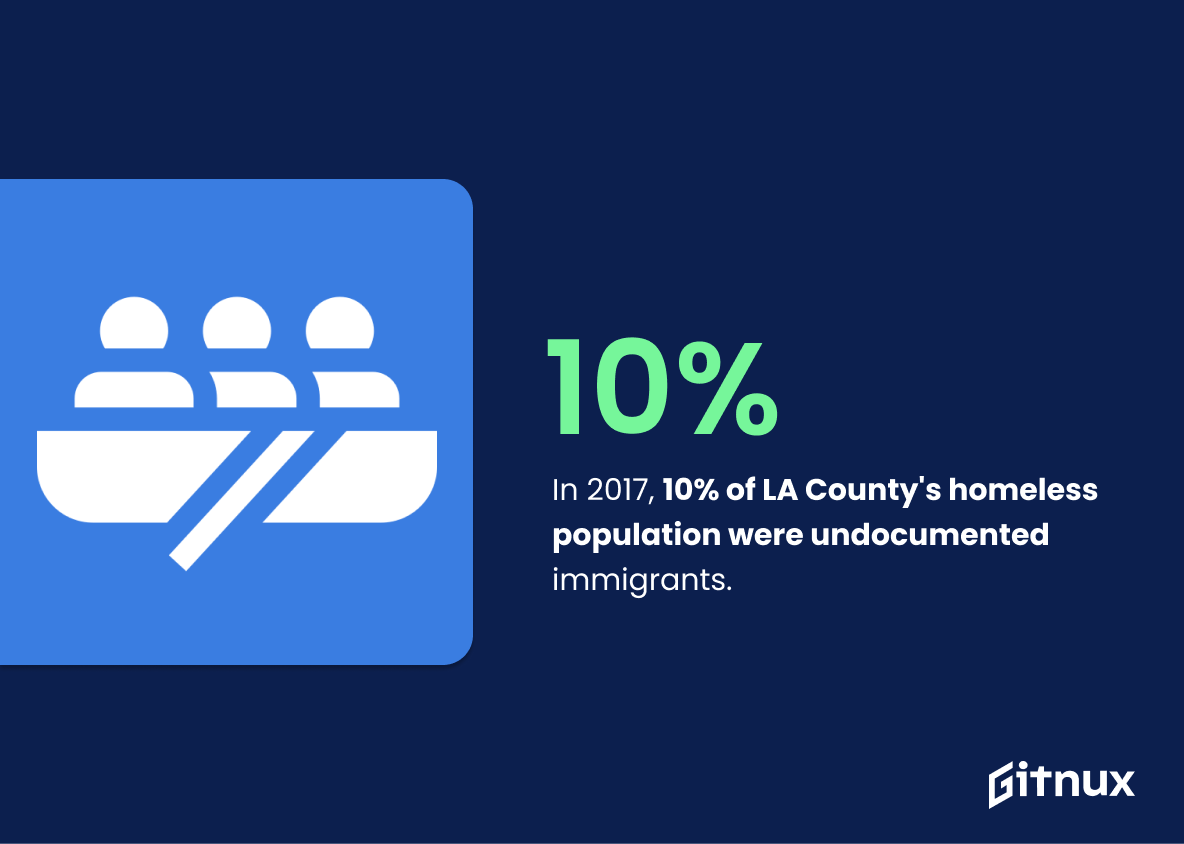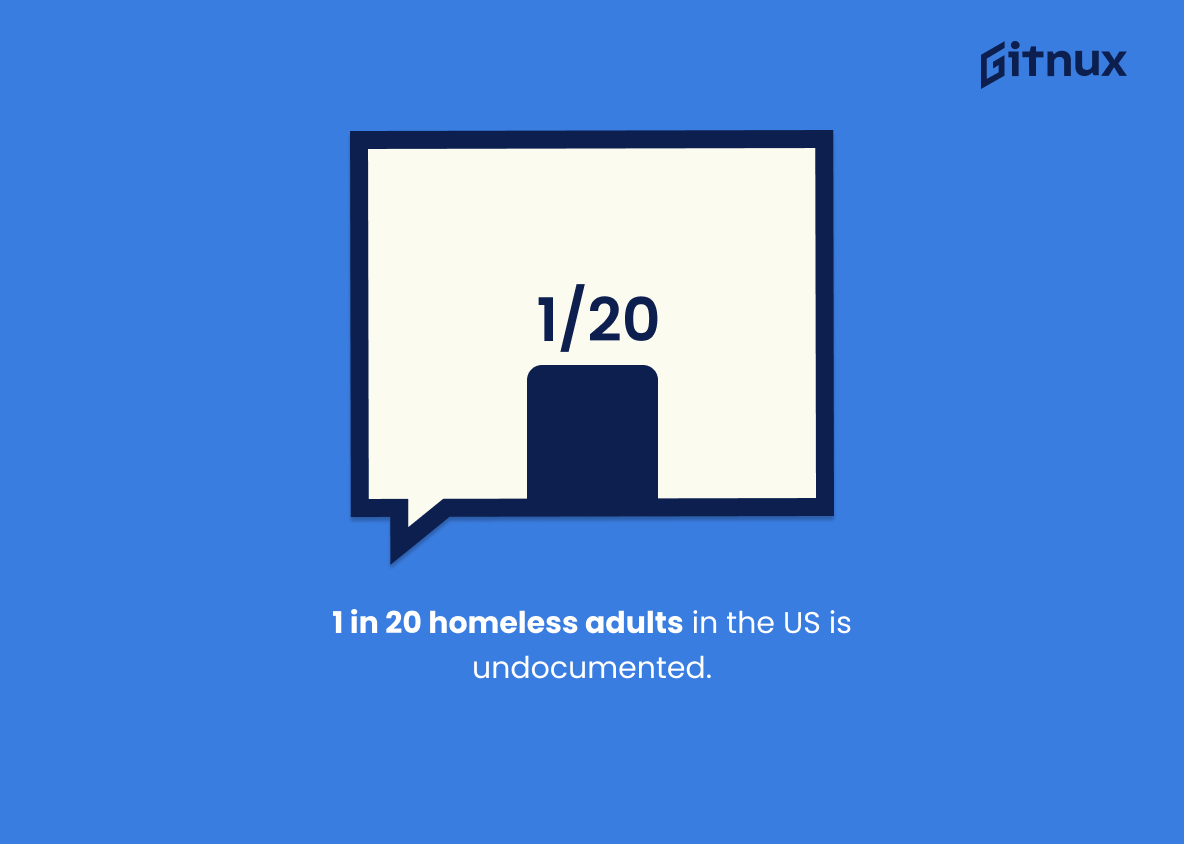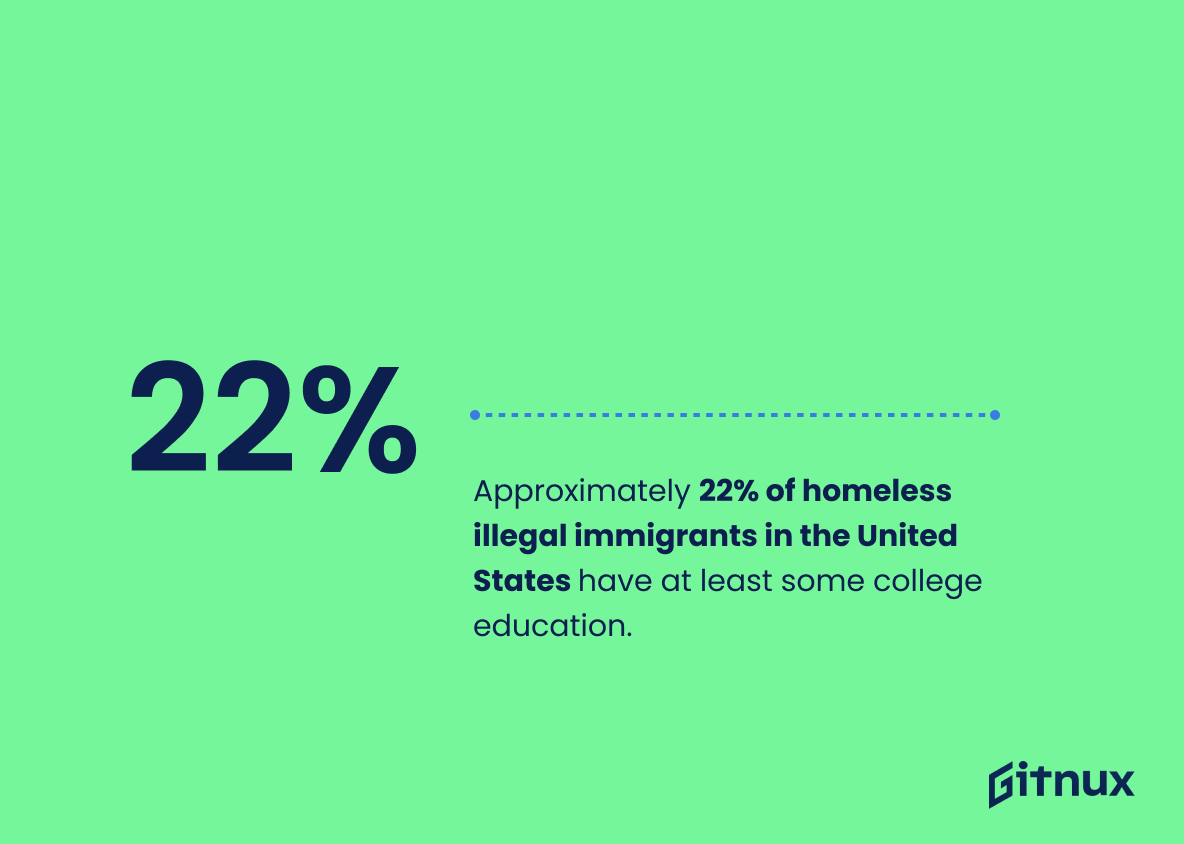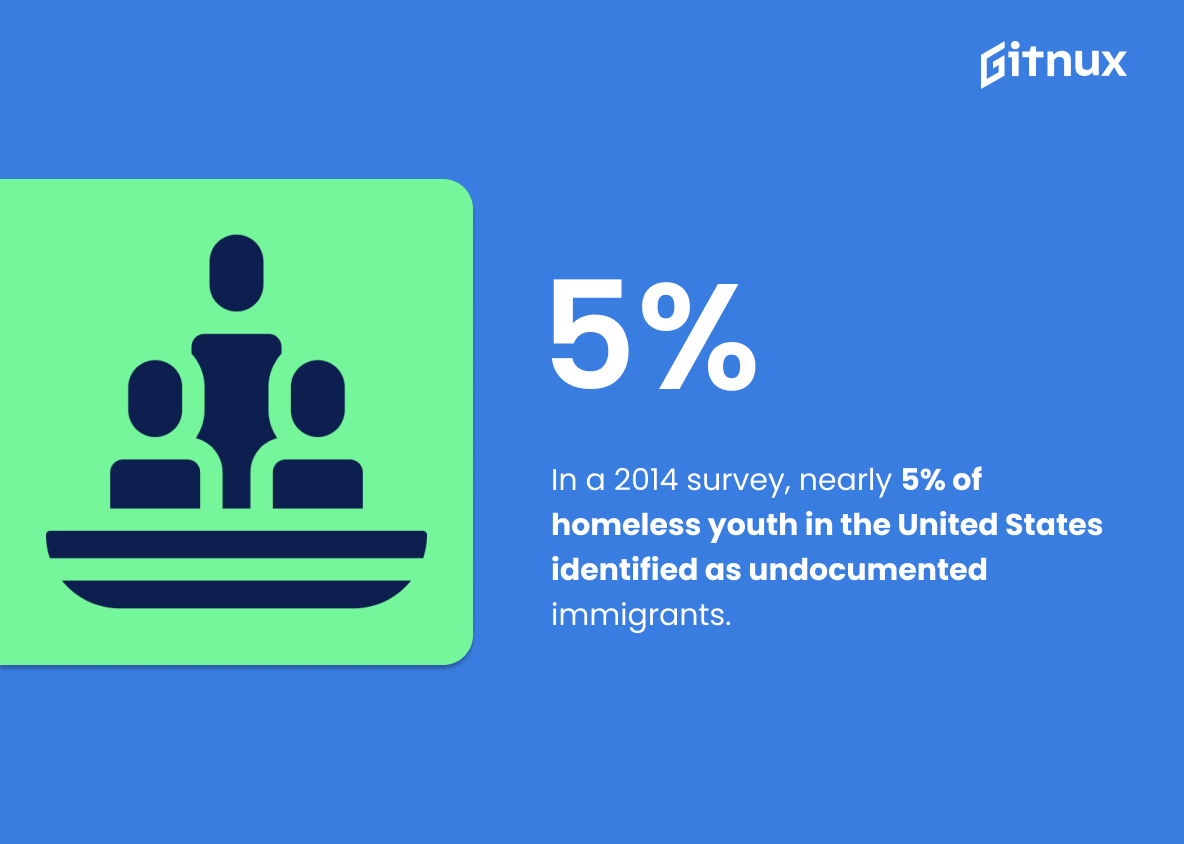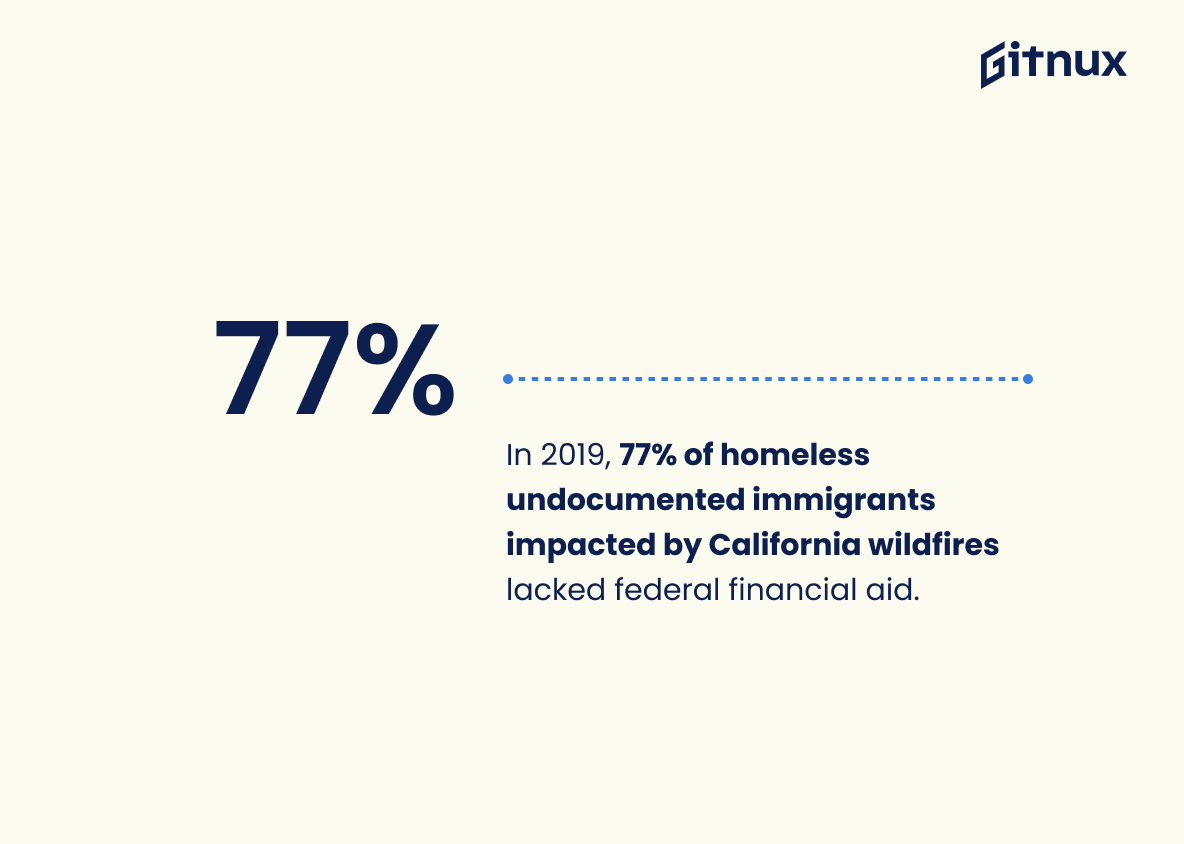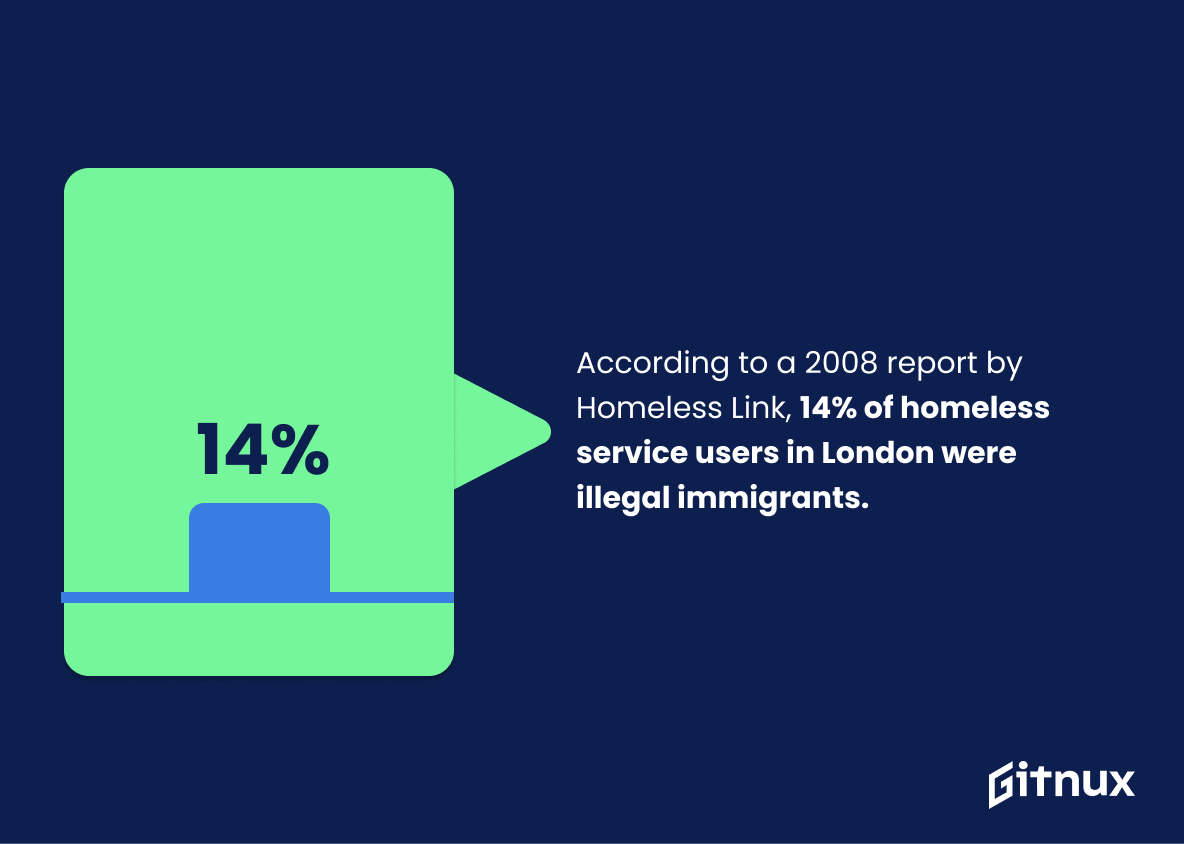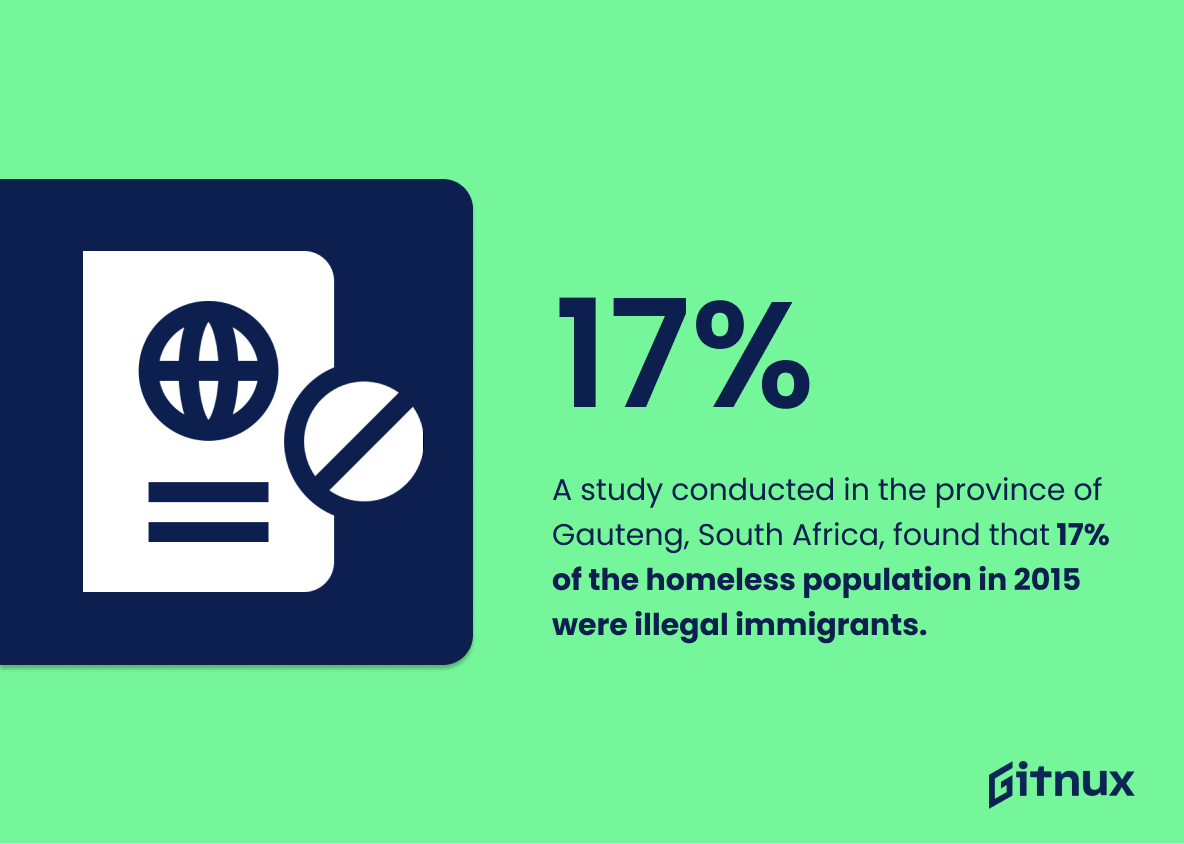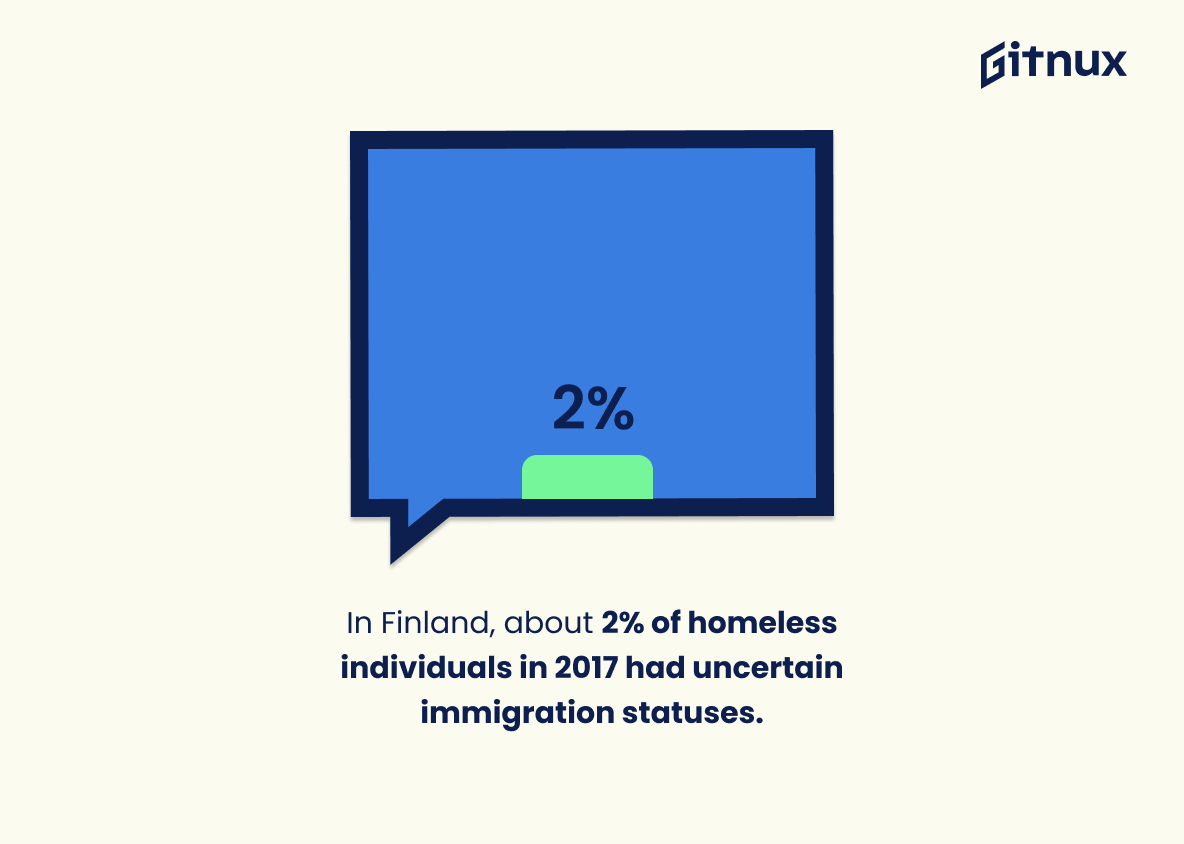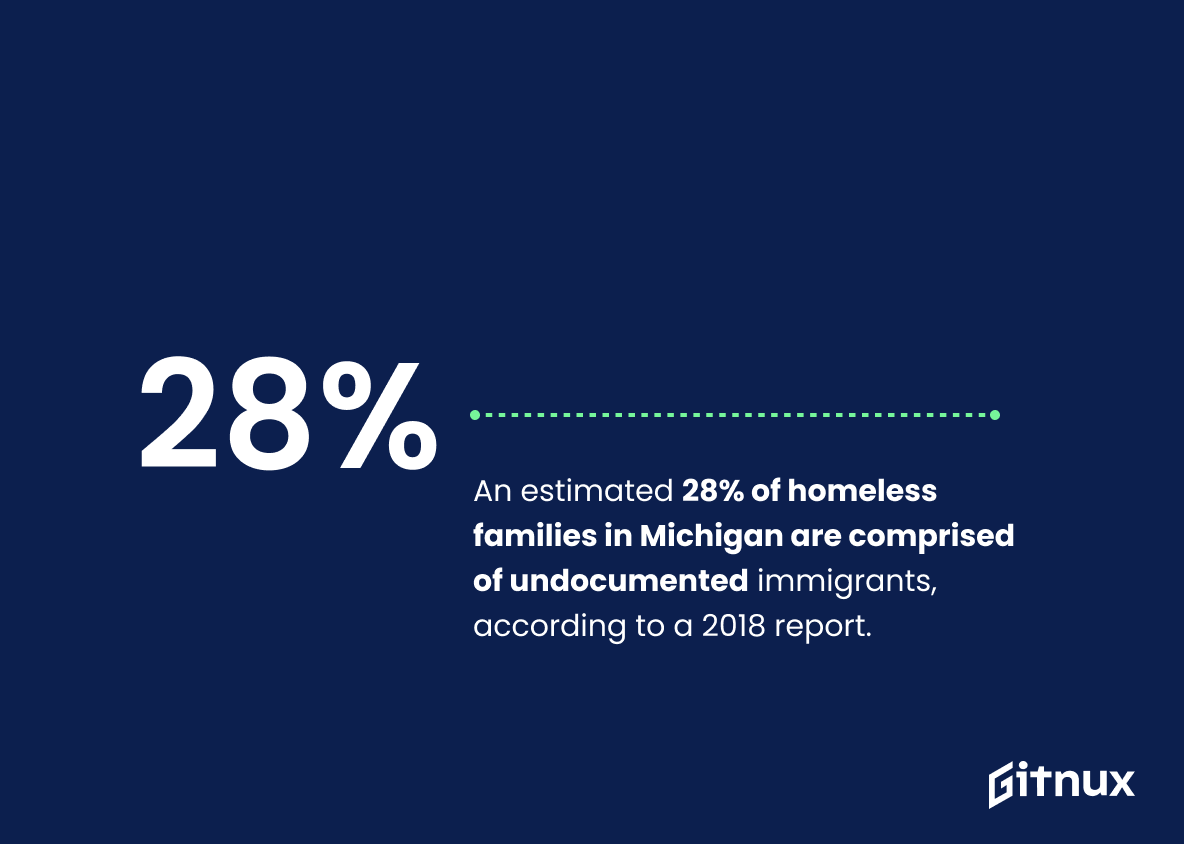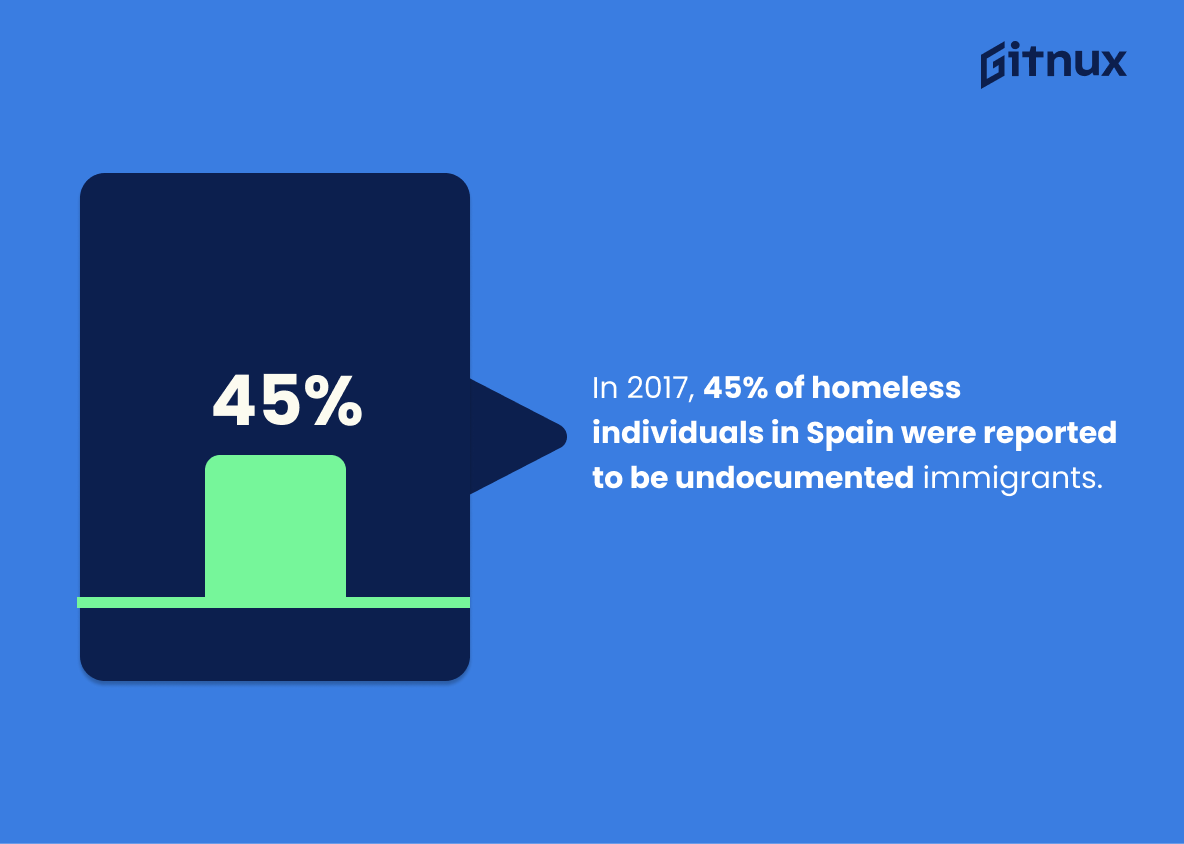The statistics on homeless illegal immigrants in the United States and around the world are staggering. From California to London, Brussels to Rome, South Africa to Finland – these numbers paint a picture of an increasingly vulnerable population that is often overlooked or ignored by society. This blog post will explore some of those statistics in greater detail, including estimates on how many undocumented immigrants are living without homes across different countries and regions as well as information about their backgrounds and experiences.
We’ll also look at what access they have (or don’t have) to financial assistance programs designed for people experiencing homelessness. By understanding more about this issue we can work together towards finding solutions that help ensure everyone has access to safe housing regardless of immigration status.
This statistic is a powerful reminder of the long-term impact of homelessness on illegal immigrants in the United States. It highlights the fact that many of these individuals have been living in the country for a decade or more, and yet they still find themselves without a home. This statistic serves as a stark reminder of the need for more effective policies to help these individuals find stability and security.
In 2013, the Public Policy Institute of California estimated that California was home to approximately 130,000 homeless illegal immigrant adults.
This statistic is a stark reminder of the plight of homeless illegal immigrants in California. It highlights the need for more resources and support for this vulnerable population, and serves as a call to action for those who are in a position to help. It is a reminder that the issue of homelessness among illegal immigrants is a real and pressing one, and that it requires attention and action.
Homeless Illegal Immigrants Statistics Overview
10% of the homeless population in Los Angeles County in 2017 was estimated to be undocumented immigrants.
This statistic is a powerful reminder of the plight of undocumented immigrants in Los Angeles County. It highlights the fact that a significant portion of the homeless population in the area is comprised of individuals who are not legally allowed to live in the United States. This statistic serves as a stark reminder of the need for more resources and support for these individuals, as well as a call to action for those who are able to help.
The National Health Care for the Homeless Council estimates that 1 in 20 homeless adults in the United States is an undocumented immigrant.
This statistic serves as a stark reminder of the plight of undocumented immigrants in the United States, many of whom are homeless and living on the streets. It highlights the need for greater support and resources for this vulnerable population, and underscores the importance of understanding the unique challenges they face.
Approximately 22% of homeless illegal immigrants in the United States have at least some college education.
This statistic is a powerful reminder that homelessness can affect anyone, regardless of their educational background. It highlights the fact that even those with college education can find themselves in a difficult situation, and that homelessness is not limited to those without any qualifications. This statistic serves to emphasize the need for more support and resources for homeless illegal immigrants in the United States.
A survey in Toronto in 2018 found that 64% of homeless illegal immigrants cited difficulties in finding affordable housing as a reason for their homelessness.
This statistic is a powerful indicator of the struggles faced by homeless illegal immigrants in Toronto. It highlights the difficulty of finding affordable housing, a basic necessity, and the impact this has on their lives. This statistic is an important reminder of the need for more resources and support for homeless illegal immigrants in Toronto.
Estimates indicate that 53% of homeless undocumented immigrants are males.
This statistic is a powerful indicator of the disproportionate burden that homeless undocumented immigrants face. It highlights the fact that the majority of those affected by this issue are male, and thus emphasizes the need for greater attention and resources to be devoted to this population.
In a 2014 survey, nearly 5% of homeless youth in the United States identified as undocumented immigrants.
This statistic serves as a stark reminder of the plight of undocumented immigrants in the United States, particularly those who are homeless. It highlights the fact that even in a country with a wealth of resources, there are still individuals who are unable to access the basic necessities of life due to their immigration status. This statistic is a call to action to ensure that all individuals, regardless of their immigration status, have access to the resources they need to survive.
In 2015, 6% of homeless people in the United Kingdom were identified as undocumented migrants.
This statistic is a powerful indicator of the prevalence of undocumented migrants among the homeless population in the United Kingdom. It serves as a reminder that homelessness is not just a domestic issue, but a global one, and that the plight of undocumented migrants is a pressing concern. This statistic is a stark reminder of the need for greater support and resources for those who are living without a secure home or legal status.
A 2019 report suggested that 77% of homeless illegal immigrants displaced by fires in California lacked access to federal financial assistance.
This statistic is a stark reminder of the plight of homeless illegal immigrants in California. It highlights the fact that the majority of these individuals are unable to access the federal financial assistance they need to survive, leaving them vulnerable to the devastating effects of fires and other disasters. This statistic serves as a call to action, emphasizing the need for more support and resources for this population.
According to a 2008 report by Homeless Link, 14% of homeless service users in London were illegal immigrants.
This statistic is a powerful indicator of the prevalence of homeless illegal immigrants in London. It serves as a reminder that the issue of homelessness is not limited to citizens of the country, but also affects those who are not legally allowed to reside in the country. This statistic is a stark reminder of the need for more effective policies to address the issue of homelessness among illegal immigrants in London.
In Rome, Italy, a 2017 report found that approximately 22% of the homeless population consisted of undocumented migrants.
This statistic is a powerful indicator of the prevalence of undocumented migrants among the homeless population in Rome, Italy. It serves as a stark reminder of the struggles faced by those who are unable to access the same rights and resources as those with legal status. This statistic is a call to action for those who are in a position to help, to ensure that all members of society, regardless of their legal status, are provided with the necessary support and resources to ensure their safety and wellbeing.
A study conducted in the province of Gauteng, South Africa, found that 17% of the homeless population in 2015 were illegal immigrants.
This statistic is a powerful indicator of the prevalence of illegal immigrants among the homeless population in Gauteng, South Africa. It serves as a reminder that the issue of homelessness is not limited to citizens of the country, but also affects those who have come from other countries in search of a better life. This statistic is a stark reminder of the need for governments to take action to ensure that all people, regardless of their legal status, have access to basic necessities such as shelter and food.
According to a 2017 study, approximately 2% of the homeless population in Finland had an illegal or insecure residency status.
This statistic is a powerful indicator of the prevalence of illegal or insecure residency status among the homeless population in Finland. It highlights the need for more effective policies to protect the rights of homeless immigrants and ensure their access to basic services. Furthermore, it serves as a reminder of the importance of providing support and resources to those who are in need of assistance.
An estimated 28% of homeless families in Michigan are comprised of undocumented immigrants, according to a 2018 report.
This statistic is a powerful indicator of the prevalence of undocumented immigrants among homeless families in Michigan. It serves as a reminder of the struggles that these individuals face, and the need for greater support and resources to help them. It also highlights the importance of understanding the unique challenges that undocumented immigrants face when it comes to homelessness, and the need for tailored solutions to address their needs.
In 2017, 45% of homeless individuals in Spain were reported to be undocumented immigrants.
This statistic is a powerful indicator of the prevalence of undocumented immigrants among the homeless population in Spain. It highlights the need for greater support and resources for this vulnerable group, as well as the need for more effective policies to address the root causes of homelessness among undocumented immigrants.
A 2015 study in Brussels indicated that of the estimated 2,600-3,000 homeless people in the city, as many as 45% were undocumented migrants.
This statistic is a powerful indicator of the prevalence of undocumented migrants among the homeless population in Brussels. It highlights the fact that a significant portion of the homeless population in the city are undocumented migrants, and thus underscores the need for greater attention to the issue of homelessness among this population. Furthermore, it serves as a reminder that the issue of homelessness is not limited to citizens of a particular country, but is a global problem that affects people from all walks of life.
Conclusion
The statistics presented in this blog post demonstrate the prevalence of homeless illegal immigrants across a variety of countries and regions. In the United States, approximately 62% of homeless illegal immigrants have lived in the country for 10 years or more, while California is home to an estimated 130,000 homeless illegal immigrant adults. Additionally, 10% of Los Angeles County’s 2017 homeless population was undocumented immigrants and 1 in 20 adult homelessness cases nationwide are attributed to undocumented individuals. Furthermore, 22% of these individuals possess at least some college education and 53% are male.
In addition to difficulties finding affordable housing (64%), employment issues (24%) also contribute significantly to their plight; 5%, 6%, 14%, 17%, 2%, 28%, 45 %and 45 %of respective populations were identified as being without legal status when surveyed about youth homelessness rates in 2014-2017 respectively from Toronto Canada , London UK , Rome Italy , Gauteng South Africa , Finland Europe & Michigan USA . Over 50 percent NYC’s Homeless Population Represented by Latinx & African American Communities with High Numbers Of Undocumented Immigrants Also Contribute To This Issue . Finally Brussels Belgium reported that between 2600 – 3000 Homeless People As Many As 45 Percent Were Undocumented Migrants In 2015 .
Overall it can be seen that there is a significant number of people who lack secure residency status living on streets around world due various factors such as difficulty accessing affordable housing or employment opportunities which need urgent attention from governments worldwide so they can provide necessary support services for them
References
0. – https://www.nhchc.org
1. – https://www.www.ncbi.nlm.nih.gov
2. – https://www.www.refworld.org
3. – https://www.www.migrationpolicy.org
4. – https://www.www.ccrweb.ca
5. – https://www.www.ppic.org
6. – https://www.www.pewresearch.org
7. – https://www.www.michigan.gov
8. – https://www.www.acf.hhs.gov
9. – https://www.www.homelesshub.ca
10. – https://www.tandfonline.com
11. – https://www.www.lalibre.be
12. – https://www.www.homeless.org.uk
13. – https://www.www.entreculturas.org
14. – https://www.helda.helsinki.fi
15. – https://www.www.comune.roma.it
